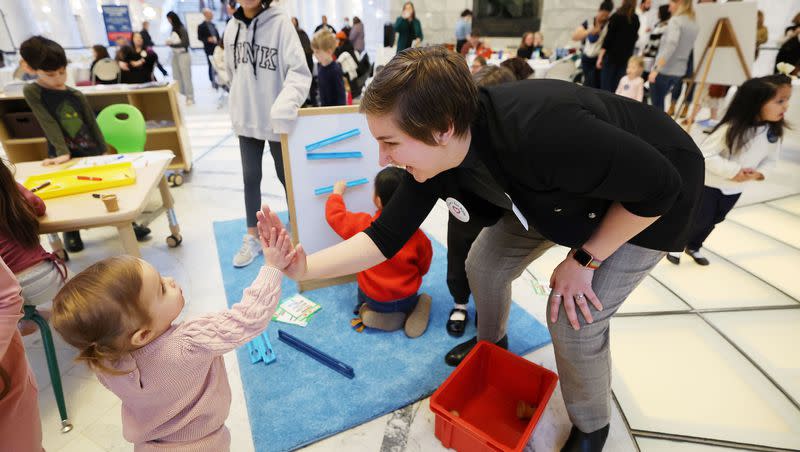Opinion: The good news and bad news about child care in Utah

Let’s start with the good news about Utah’s child care system.
First, Utah is full of passionate, committed, hardworking child care professionals who show up, day after day, to support working Utah families.
Second, Utah’s Office of Child Care has made good use of hundreds of millions of dollars of COVID-19-era funding to stabilize and improve our child care system.
Third, thanks to the hard work of both child care professionals and child care public administrators, Utah actually has more licensed child care available for families than before the COVID-19 pandemic.
You read that right. Unlike many other states, which saw dramatic program closures and workforce flight, Utah’s pandemic-era efforts have resulted in a remarkable 31% increase in licensed child care capacity statewide. Thanks to much-needed supportive grants to child care programs, as well as proactive efforts to recruit and coach child care professionals, our child care system survived and even thrived over the past three years.
As advocates for affordable and accessible child care, we recognize and applaud this as a proven and time-tested policy solution. Public investment in child care can and does help working Utah families and the child care providers caring for their children.
As advocates, it is also our responsibility to discuss where Utah still desperately needs improvement.
Next week, Voices for Utah Children will release a new report on the current state of licensed child care access in our state. “Mapping Care for Kids: A County-Level Look at Utah’s Crisis in Licensed Child Care” shows the gap between the potential need for child care in each county and the licensed child care capacity in those counties — and no, the news is not good.
Despite the progress over the past several years, Utah’s licensed child care capacity is still insufficient to meet the needs of working families. Every county in Utah has a large gap between what is needed and what is available.
Related
Rural families face the most challenges. Of all 29 counties statewide, the 17 counties with the lowest rates of child care access are all rural. In Morgan County, there is only one licensed child care spot for every 33 children potentially in need of care. The cost of child care, relative to the median income in many rural counties, is exorbitant. For example, in Grand County, a family of four with two children under six could spend 41% of their annual household income on child care.
Our report includes fact sheets for every county in the state, as well as data highlighting child care access issues statewide. We also include policy recommendations to direct state and local leaders toward sustainable solutions for Utah families.
None of these recommended interventions are inexpensive or easy. However, they are proven to work, in Utah and across the country.
To seriously address Utah’s child care crisis, which impacts families in every corner of our state, our leaders must commit to public investment in young children. It’s time to end our unofficial state policy of leaving young parents to fend for themselves when their children are youngest and their careers the least lucrative.
There is too large a gulf between what families with young children can afford to pay, and what child care providers need to charge in order to ensure a safe, quality experience for children. Public funding is needed to help families afford child care, and to help child care providers keep their services affordable. It is unconscionable to rely on the generosity of early educators, and the creative survival instincts of parents, to maintain the child care system on which our state economy relies.
It takes parents and families to raise Utah children, and it takes communities to support those parents and families. Child care is not the problem of individual families; it is a shared problem for which we all share responsibility.
Anna Thomas, policy director, and Jenna Williams, policy analyst, both work at Voices for Utah Children, a nonpartisan, nonprofit organization dedicated to policy advocacy that benefits kids.

